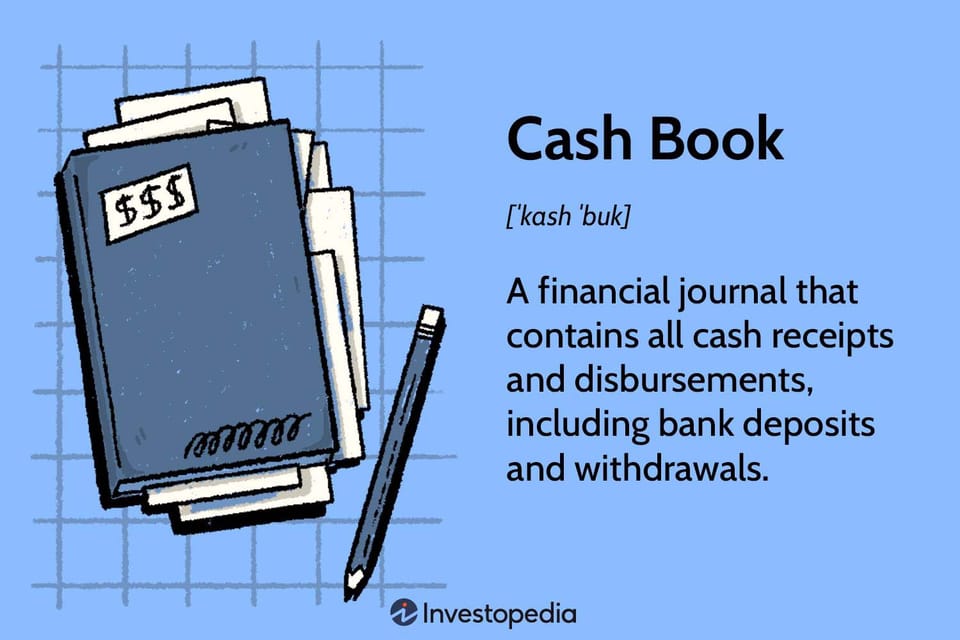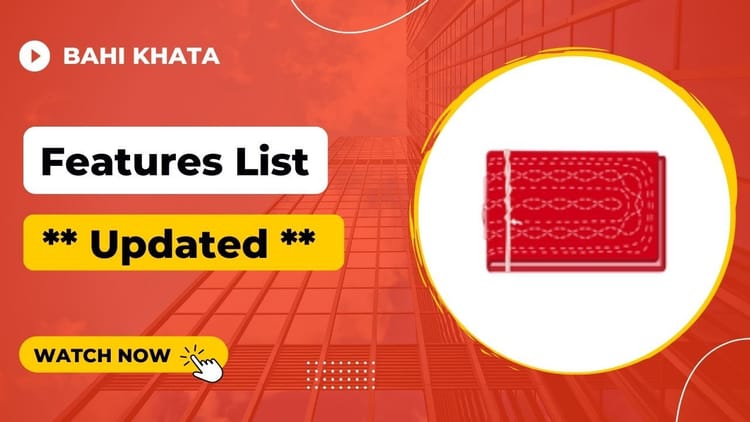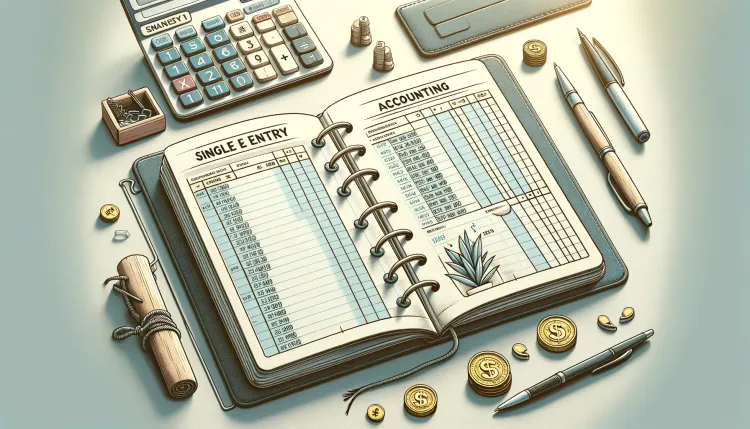Cashbook Bahi Khata: Simplifying Financial Record-keeping for Small Businesses

Introduction:
- In the realm of small businesses and entrepreneurial ventures, maintaining accurate financial records is a critical aspect of success. One tool that has gained popularity, especially in local businesses in South Asia, is the "Cashbook Bahi Khata." This traditional accounting method combines the simplicity of a cashbook with the cultural significance of a Bahi Khata, providing a straightforward yet effective way to track finances. In this article, we will explore the concept of Cashbook Bahi Khata, its features, and how it can be a valuable asset for small businesses.
Understanding Cashbook Bahi Khata:
What is cash book in Bahi Khata?
- The term "Bahi Khata" is derived from Hindi and Urdu, where "Bahi" means book, and "Khata" means account. The Cashbook Bahi Khata, therefore, is a manual ledger that businesses use to record their daily financial transactions. It serves as a consolidated record of income and expenses, providing a tangible and accessible method for businesses to keep track of their financial health.
What is the Features of Cashbook Bahi Khata:
Simple Entry System:
- Cashbook Bahi Khata follows a straightforward entry system. Each page is dedicated to a specific time period, typically a day or a week, and entries are made in a chronological order. This simplicity makes it easy for business owners, even those without extensive accounting knowledge, to use it effectively.
Cash and Credit Transactions:
- The Cashbook Bahi Khata captures both cash and credit transactions, allowing businesses to monitor their liquidity and outstanding payments. This feature is particularly beneficial for businesses that operate on a cash basis as well as those extending credit to customers.
Expense Categorization:
- Transactions are categorized into income and expenses, providing a clear overview of the business's financial activities. This categorization helps in identifying areas of high expenditure and opportunities for cost-cutting.
Personalization and Cultural Significance:
- Beyond its practical utility, the Cashbook Bahi Khata holds cultural significance in many communities. The personalization of the Bahi Khata, such as using specific colors, symbols, or designs, adds a touch of tradition to the financial record-keeping process.
No Dependence on Technology:
- One of the key advantages of the Cashbook Bahi Khata is its independence from technology. Unlike digital accounting software, it doesn't rely on electricity, internet access, or software updates. This makes it an ideal choice for businesses in areas with limited technological infrastructure.
Also Read Our More Article:-
- Single Entry Accounting
- Double Entry Accounting
- How to Use Bahi Khata App?
- Significance of Credit Bahi Khata in Financial Management
What is the Benefits of Using Cashbook Bahi Khata?
Cost-Effective:
- As a manual accounting tool, the Cashbook Bahi Khata eliminates the need for expensive accounting software and related subscriptions. It offers a cost-effective alternative for small businesses with budget constraints.
User-Friendly:
- Its simplicity makes Cashbook Bahi Khata accessible to a wide range of users, including those without formal accounting training. Business owners can easily manage their finances without the learning curve associated with complex digital accounting systems.
Enhanced Financial Discipline:
- The act of manually recording each transaction fosters a sense of financial discipline among business owners. Regularly updating the Bahi Khata encourages a proactive approach to financial management.
Cultural Heritage:
- For businesses deeply rooted in traditional practices, the Cashbook Bahi Khata provides a bridge between modern financial management and cultural heritage. It becomes a symbol of the business's commitment to its roots.
Conclusion:
In the ever-evolving landscape of business and technology, the Cashbook Bahi Khata stands out as a resilient and culturally rich method of financial record-keeping. Its simplicity, cost-effectiveness, and cultural significance make it an attractive option for small businesses looking for an uncomplicated yet effective way to manage their finances. As businesses continue to embrace technology, the Cashbook Bahi Khata remains a testament to the enduring charm of traditional practices in the world of finance.
FAQs:
What is cash book in Khatabook?
- In Khatabook, a cash book is a digital ledger that allows businesses to track and manage their cash transactions. It records all cash inflows and outflows, helping users maintain an accurate account of their business's cash balance.
What are the 3 types of cash book?
The three types of cash books are:
- Single Column Cash Book: Records only cash transactions.
- Double Column Cash Book: Records cash and bank transactions in two separate columns.
- Triple Column Cash Book: Includes cash, bank, and discount columns, recording transactions involving cash, bank, and discounts received or given.
Is CashBook app safe?
- The safety of the CashBook app, like any financial application, depends on its security measures, user reviews, and compliance with financial regulations. It's important to research its encryption standards, privacy policies, and user feedback to determine its safety. Always ensure you download it from a reputable source.
What is cash book entry?
- A cash book entry is a record of financial transactions involving cash receipts or cash payments, detailing the date, description, and amount of each transaction.
What is cash book type?
- Cash book types are single column, double column, and triple column, reflecting cash transactions, bank transactions, and discounts alongside cash and bank transactions, respectively.
What is cashbook benefits?
Cashbook benefits include:
- Accurate Record Keeping: Helps maintain a precise record of all cash transactions.
- Financial Control: Enhances control over cash flow and financial management.
- Easy Reconciliation: Simplifies the process of reconciling bank statements with cash records.
- Efficiency: Streamlines the process of recording transactions, saving time and reducing errors.
- Budget Monitoring: Aids in monitoring and adhering to budgets by tracking all cash movements.
Is cashbook a debit?
- In the framework of a single-column cash book, entries for receipts land on the left side, marking them as 'debit entries,' while the right side is reserved for logging payments or cash outflows, known as 'credit entries'.
We hope that you like this content and for more such content Please follow us on our social site and YouTube and subscribe to our website.
Manage your business cash flows and payable/receivables using our Bahi Khata App.




Comments ()